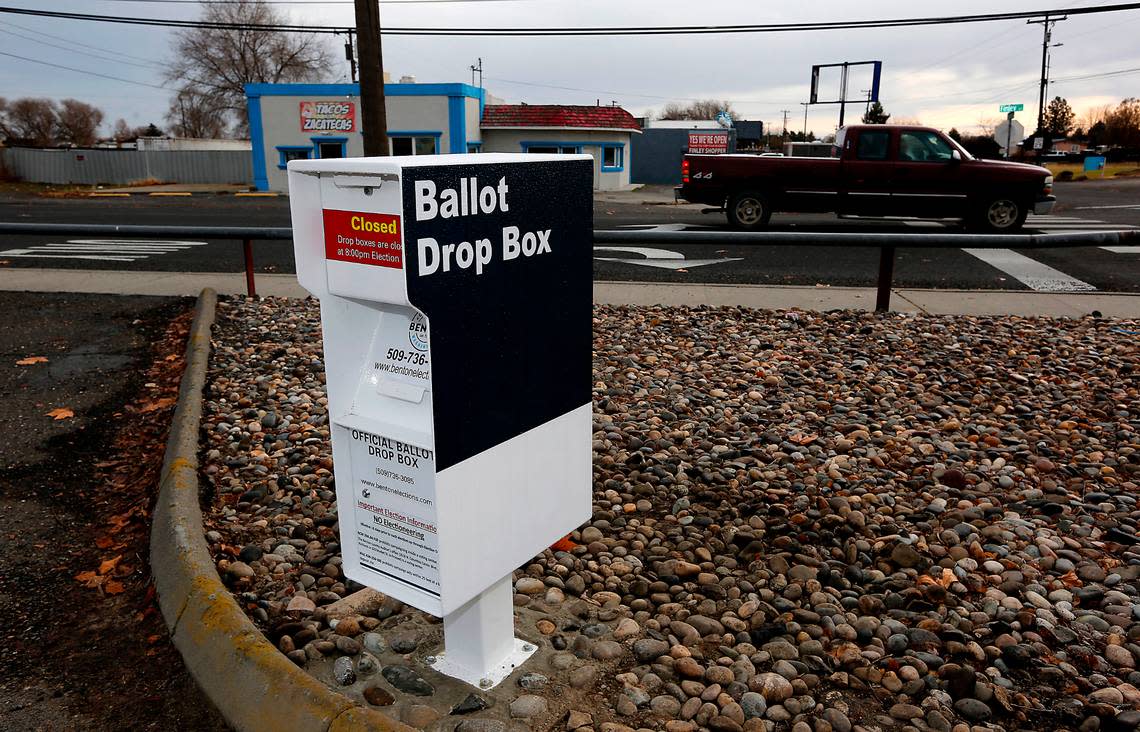Franklin County’s young voter turnout was the worst in WA state

Barely one-quarter of Franklin County voters returned ballots in last month’s general election — the third lowest among Washington’s 39 counties.
And despite being among the state’s youngest counties, Franklin had the worst youth voter turnout across the state this fall.
The county was the only one in Washington where less than 10% of registered voters between the ages of 18 and 24 returned their ballots.
“Every year, we throw the most important party in town and not everybody shows up — and all that’s at stake is the future of your government,” said Franklin County Auditor Matt Beaton.
Statewide, Washington saw historically low voter turnout in the Nov. 7 general election, and returns for the Tri-Cities weren’t that much better.
Statewide turnout reached just 36%, according to data from the Washington Secretary of State’s Office. More than 3 million of the state’s 4.8 million registered voters did not participate, marking the third time in the past eight years that the state has set a record low turnout percentage.
Benton County had better turnout than Franklin. Roughly 36% of registered voters returned ballots
But in both Benton and Franklin counties, two-thirds of voters chose not to return ballots, which amounts to more than 113,000 people in the greater Tri-Cities region.
That means just 34% of the region’s voters — about 57,500 — returned their mail-in ballots to participate in last months’ election.
The counties that saw the lowest overall turnout were Franklin (28%), Clark (27%) and Yakima (26%).
A lack of statewide measures on the Nov. 7 ballot likely contributed to the already poor turnout seen during odd-year elections, reported the Seattle Times. This year general election cycle was the first in decades without a statewide referendum, initiative or advisory vote.
State law requires nonpartisan races for small districts — such as school boards and city councils — to take place during years that end in an odd number, while federal and state races are held in even years. Roughly 64% of registered voters turned out for last year’s general election midterms.
Local auditor offices run elections in collaboration with the Washington Secretary of State’s Office.
Beaton said while it wasn’t a good year for turnout, he’s sure it wasn’t Franklin County’s worst year. He didn’t know the exact year, however.
Beaton said because voting is a habitual activity year after year that could explain why older voters tend to turn out more consistently in off-year elections than young voters.
He noted that Washington state counties with high Latino populations — including Yakima, Adams and Franklin counties — already tend to have lower voter turnouts.
In the Tri-Cities, Latinos lost representation on local city councils and school boards this fall.
Some believe it was because young Hispanic voters just haven’t historically turned out, especially in off-year elections, while others say it was because the positions of some appointed candidates didn’t align with the voters.
However, the actual level of Hispanic voter turnout in the Tri-Cities isn’t known because county auditors and the state do not track ballot returns by demographic groups.
When asked how to improve turnout, Beaton said that’s more of the responsibility of the Secretary of State’s Office. His job is to run a fair, transparent and informative public election.
Low voter turnout
Benton County Auditor Brenda Chilton said it’s possible many voters are already starting to tune out the political soundbites and advertisements this year in anticipation of the onslaught of campaigning coming during next year’s presidential election.
“It’s just going to accelerate after the beginning of the new year, after the holidays, since we have a presidential primary in March,” she said. “I think ‘voter fatigue’ is a really good way to phrase it.”
Benton County’s 36% turnout last month was on the lower end of the range than they normally see during off-year elections.
That could be for a variety of reasons. Chilton said it remains challenging for local candidates to get their names out to the public. One reason may be the cost media advertisements, as well as direct mailers, continues to rise.
“When voters open up their ballots and just don’t recognize any of the names, it’s hard,” she said.
Washington lawmakers earlier this year also got rid of the statewide advisory votes that regularly appeared on ballots.
Chilton hopes this year’s lagging turnout remains an exception.
“I’m hoping this is an anomaly and people are as energized to vote in 2025 as they are to vote in 2024,” she said.
Washington’s presidential primary is set for March 12, 2024.

